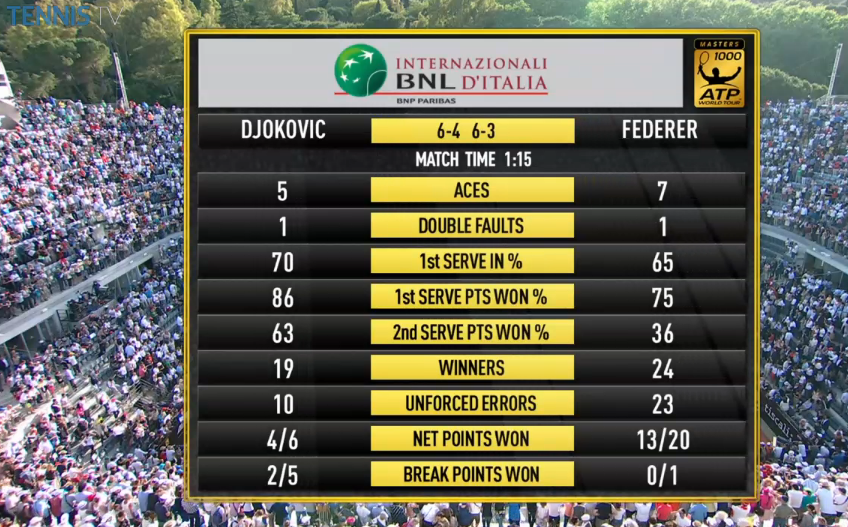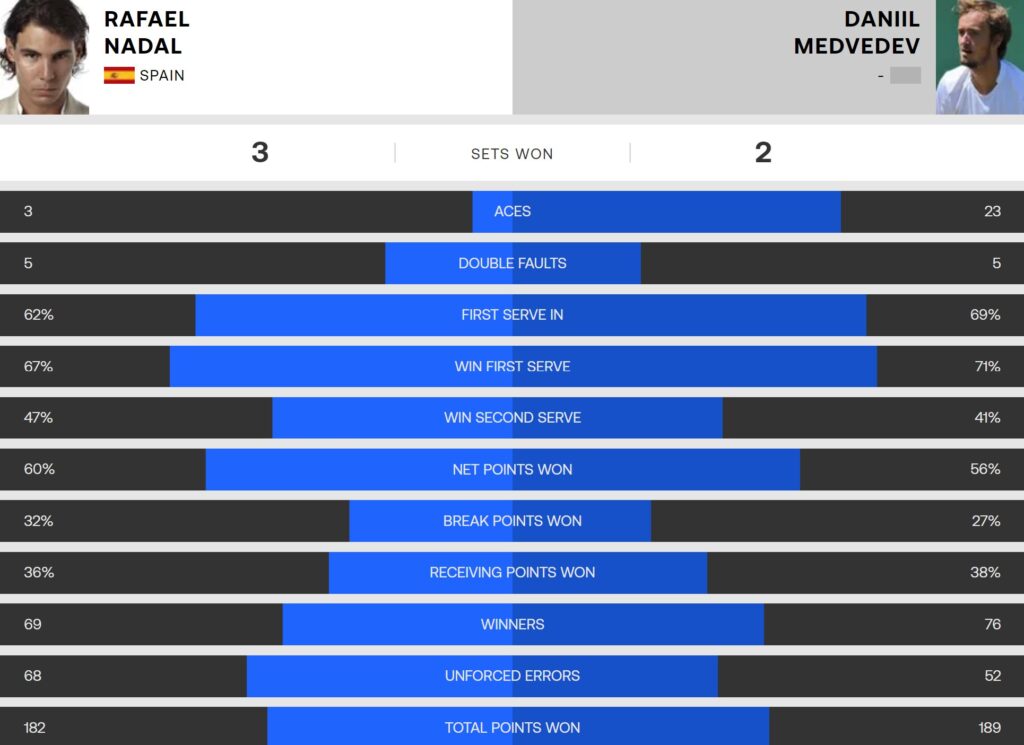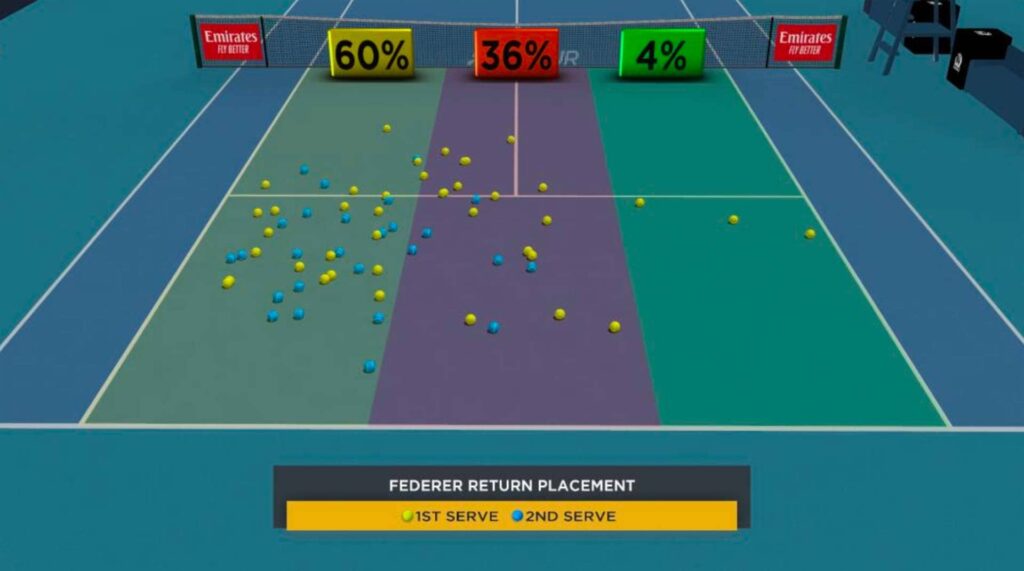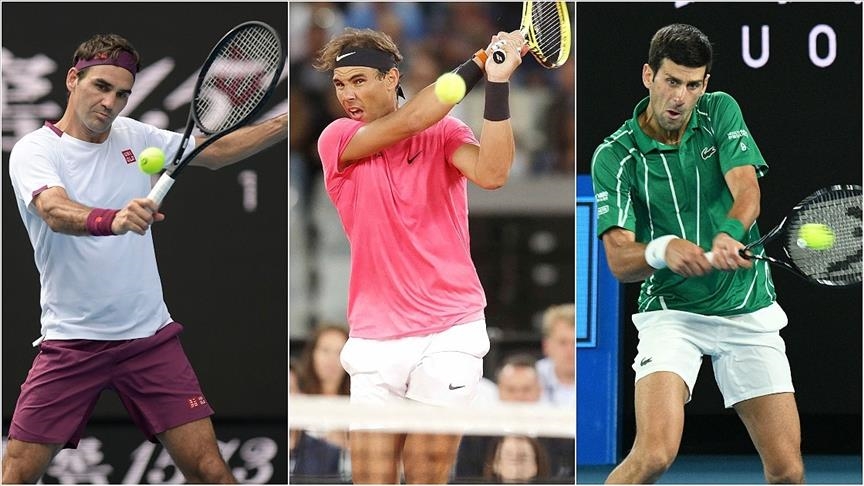
Over my middle and high school experience sports were a critical part of my day-to-day life. From soccer to tennis I spent most of my afterschool time on the field or courts practicing to become a better player and hopefully make the team proud. Tennis especially was the sport that drew my attention during my 7th-grade year at Camden Middle School. We had an ex-pro coach named Breag (a European beast of a tennis player) who coached me from 7th grade until my graduation from Camden county High school. Now the intro is over, and on to the good stuff.
During my time playing tennis one thing my coach said to me stood out the most: “if you hit all of your shots in 1 percent more every time than your opponent, you are 90% more likely to win the match.” Or something along those lines, he was a very smart guy. While these stats may not be completely accurate, I did see the truth in his advice that tennis is a game of percentages. I may be 10% more likely to hit the cross court and across my body (it is a longer distance for the ball to hit, and consistency is improved across your body shots) so I’m going to hit over there 3 times, then down the line to win the point. These thoughts about statistics changed the way I played the game. I took a more conservative, more consistent approach, rather than the slam the ball down the line method that worked every time, 40% of the time.
Since the adoption of artificial intelligence and cloud computing in the tech and business world we have seen a lot of statistical improvements in business processes and even in sports. Baseball, although I don’t know much about the sport, shows hitting averages, and displays of hits in correlation to the field. Football has passing stats, receiving stats, play reviews, and a lot more in every sport. But we will stick with tennis on this blog. Tennis has also adopted AI and cloud computing to track player stats, point ratios, in-shot percentages, and many other stats that prove useful for players, coaches, fans, and tournament operators.
I wanted to talk briefly about the line in/out system that tracks balls to see if they hit the line or not. This technology and digitalization of line officials have impacted the sport and many games due to the close nature of many of the shots being in or out. The system is called Hawk-Eye Tennis Line Calling System which was implemented in the US Open in 2006 and has been used ever since as a challenging method (like in football) where players can challenge officials’ calls and get them overruled. This changed the game and created an unbiased, human error-less system that is still being used today in every ATP and WTA tennis tournament. This was basically the first step in digitizing the game of tennis and then led to a path of cameras, sensors, and computerization in and around the courts that would capture real-time game data as I’m about to further explain.
The US Open now uses IBM computing and network to predict match stats in real-time (PC magazine )
Now we will talk about statistics, then AI-generated strategies for winning tennis matches!

Above I’ve shown a picture of Nadal and Medvedev’s stats for the 2023 Australian open which lists multiple statistics, percentages, and additional information about the match that watching the game, you couldn’t have counted yourself. All of these statistics are generated from the data centers inside the tournament networks tracking each hit of the ball between the two competitors.
These statistics of the tennis players bring in fans and make them feel like they are more incorporated into the game and knowledgeable of what is going on with their favorite players. While the fans’ aspects of the statistics are incredibly helpful for the tennis community, players are heavily affected when it comes to being helped by statistics and also stats being used against them, which goes into my next topic. Players use statistics to identify trends on what they need to work on in their last match, in preparation for the upcoming match, in this case, one of the biggest tournaments in the world. If you take a look at the attached stats page, you can see Nadal won, as he often does. Medvedev should look at his net and breakpoint percentages to see where he can improve (this is not hated towards Medvedev, he is great but Nadal is greater). If Medvedev would have won even one or two more break points (which is him having to beat Nadal’s serve) he probably would have won the match and advanced further into the tournament. On the other hand, Nadal needs to work on not getting burned down the line by Medvedev’s serve and offensive shots, which would have made it not a close game in the slightest. This is just the beginning of how stats can help players advance in the game using next-generation uses of technology in the sport.
AI Strategies


For AI-generated strategies, this comes with an ethical concern of whether should we just let the players play and figure it out. Or provided the with the most sophisticated and informed information about what their opponent’s weaknesses are, even down to how likely they will be to win the match if they pressure their opponents backhand during the match. This is again a discussion for another time, in all sports.
With the adoption of AI coaches and players have a load of data at their fingertips to formulate training regimens to play to their weaknesses or to formulate strategies based on their opponent’s generated stats to create winning plans before a match begins. This is transformative, especially after the reign of Federer, Nadal, and Djokovic as new powerhouse players enter tournaments backed by even more data than the big three had in the 2000s and 2010s.
Forbes tennis writer Patrick Morehead says, “In tennis, by understanding metrics such as spin, speed, placement, and the position of players, coaches can provide insight into improved decision-making. AI can deliver clips of every player’s winning tactics or visual analysis to help coaches develop counter-strategies.” This is the new game of tennis powered by artificial intelligence and cloud computing offering statistics at the fingertips of players competing in the ATP and semi-pro associations.

Tennis has been a dominant sport since the 1870s and I’m sure will be around way into the future as well. Sports are ever-evolving and will increase in digitalization as the rest of the world does. The advantages of tech are incredible and will surely shape the game as we know it today, just as it has in the last 10 years as well.
Thanks for reading I hope you enjoyed it!
Citations
Moorhead, P. (2021, August 3). Tennis is now on the cloud and powered by Applied Ai, and this is how Roland-Garros did it. Forbes. Retrieved January 30, 2023, from https://www.forbes.com/sites/patrickmoorhead/2021/08/03/tennis-is-now-on-the-cloud-and-powered-by-applied-ai-and-this-is-how-roland-garros-did-it/?sh=7b4559e373f3
Rafael Nadal – Daniil Medvedev stats: Tennis Scores & Results. Eurosport. (n.d.). Retrieved January 30, 2023, from https://www.eurosport.com/tennis/australian-open-men/2022/live-rafael-nadal-daniil-medvedev_mtc1325252/live-stats.shtml
Willis, M. (2021, December 23). Tennis ai. Tennis AI – by Matthew Willis. Retrieved January 30, 2023, from https://theracquet.substack.com/p/tennis-ai
Nice post Charlie – tennis is such a game of percentages, as they all are seeming to become statistics nowadays (Shoutout Moneyball). Aggregating data, then using this data to create insight into decision making is AI in its purest form: automated decisions. I have always thought this could be applied to football coaching in the NFL particularly. Decisions that require such a high level of knowledge like the best time to call timeouts, run a certain play, or dialing up a blitz would probably be advantageous! Think about all the data that can work to put your team in the best possible scenario.
yea sports will need some type of regulation. Especially games like football where AI could run through film and show the exact play teams are about to make before they make it. Do you know if they already have regulations in place right now?
Fabulous post. If you haven’t read the book Atomic Habits by James Clear, he builds significant on this 1% improvement principle. Definitely worth a read. I love hearing about the impact of digital technologies in sports of all types. It’s really crazy how much the analytics are driving how the sports are played and coached at the highest level. Glad to add tennis to that list now!
Yea I even thought of it through the lens of lean six sigma that we learned in BPMN. When a company keeps its defects down the percent increase of efficiency in production goes up exponentially which is cool to think the concepts apply in a lot of areas of our world!
Really good post Charlie. Ive never thought about the uses of AI and technology for Tennis before. It was super interesting to see how the new technology can track speeds and spin rate and then use that data to formulate strategies based on the player. This could make the new generation of tennis players exponentially better and provide a huge boost to the sport that is so technically challenging. It would be interesting to see this analytical tracking in other sports where technique and decision making is super important.
Hey Charlie, I should have read your post first! I just commented on Agazies post talking about how I think AI could be used in the future to run simulations based on a team’s gameplay to find weaknesses. When it boils down to it I feel like all sports can learn a lot through stats and using AI technology. I have played tennis a handful of times, but I play “table tennis” all the time! I can definitely see how the two sports can relate and I bet if I had an AI taking my stats as a ping-pong player I could learn a lot about where my weaknesses are and where I can improve.
I think you may like this article I read the other day Chase! https://www.scientificamerican.com/article/how-olympic-tracking-systems-capture-athletic-performances/
Hi Charlie, this is an interesting read. Statistics have crept into most areas of our life now whether we know it or not, and I love how impactful it has been in sports. As for the digitization of tennis, I personally love the challenge system and how it shows the sharpness of a professional tennis player’s eye. Stats, cameras, and computers have changed the game, and you mentioned the ethical concern of all this. It is ultimately the players decision to use the data that is collected, and it would seem foolish to not use these resources. As Vince Dooley said after being questioned about using data analytics in football when UGA won the title in 1980, “it definitely didn’t hurt”.
This is an awesome post/comment thread! It also reminded me of the book Atomic Habits by James Clear and improving by 1% consistently can help you outperform others. This also goes to show how the accuracy of AI and technology can completely change a sport in terms of getting calls overruled. I also loved how you mentioned the ethical concerns of the implementation of AI in sports! Great job, really enjoyed the read!